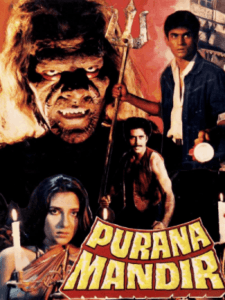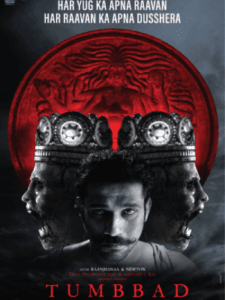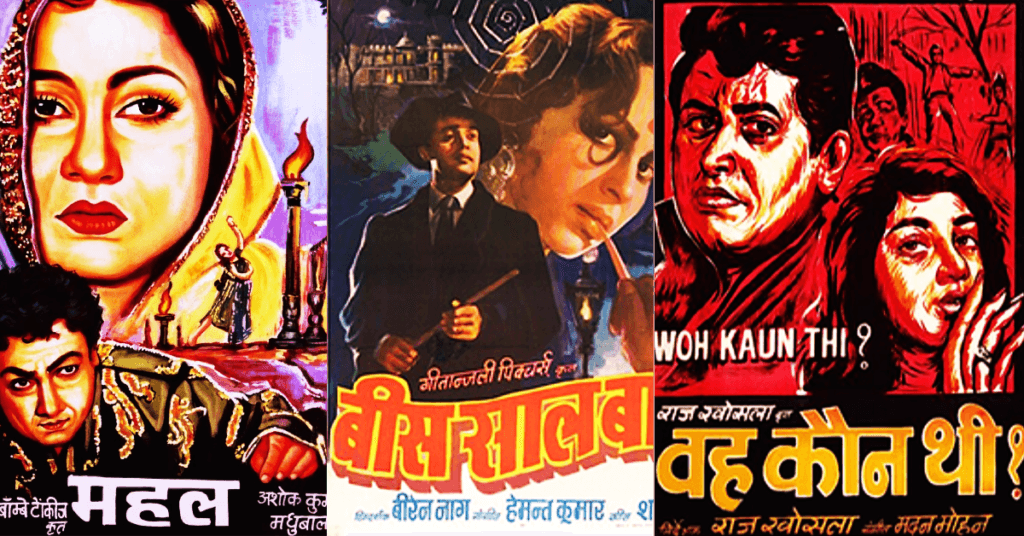Horror is one of the most thrilling and impactful genres in global cinema, yet in India, it remains an underappreciated and often ridiculed category. Unlike Hollywood, where horror films have a dedicated audience and mainstream directors, writers, and actors embrace the genre, Indian horror films have largely been relegated to the fringes of commercial cinema. Why is it that horror is not taken seriously in India? Why don’t major filmmakers invest in the genre? And is it truly an unprofitable venture?
A Brief History of Horror in Indian Cinema

The horror genre in India has had a long yet inconsistent journey. The first known horror film in India, Mahal (1949), directed by Kamal Amrohi and starring Ashok Kumar and Madhubala, was a major success. It set the stage for supernatural and gothic horror in Indian cinema. The 1960s and 1970s saw the rise of Gothic horror films, heavily influenced by Western cinema, with movies like Bees Saal Baad (1962) and Woh Kaun Thi? (1964) becoming cult classics. The 1970s and 1980s saw the rise of the Ramsay Brothers, who defined the horror genre with films like Purana Mandir (1984) and Veerana (1988). Their brand of horror, filled with eerie havelis, foggy graveyards, and over-the-top ghostly makeup, created a cult following but also cemented the perception of horror as a low-budget, B-grade genre.

While the 1990s saw a decline in horror films, the 2000s brought a resurgence with Raaz (2002) inspired by Hollywood’s What Lies Beneath and Bhoot (2003). However, despite occasional hits like Pari (2018) and Tumbbad (2018), the genre continues to struggle for legitimacy. Films like Bhool Bhulaiyaa and Stree lean towards horror-comedy, which further dilutes the seriousness of the genre in Bollywood.
Why Are Horror Films Not Considered Mainstream in India? To understand why horror remains on the fringes of Indian cinema, we must explore the factors contributing to its lack of mainstream acceptance. In India, cinema is often seen as a medium for entertainment, escapism, and social commentary. Horror, as a genre, is frequently dismissed as “lowbrow” entertainment, lacking the depth and seriousness of dramas or comedies. This perception has led to a lack of interest from mainstream filmmakers and actors, who often view horror films as a risk to their careers. As a result, poor production quality, predictable scripts, and excessive melodrama dominate Indian horror. Many films rely on loud background scores, cheap jump scares, and clichéd storytelling rather than atmospheric tension and psychological horror.
Unlike Hollywood, where major directors like James Wan (The Conjuring), Ari Aster (Hereditary), and Jordan Peele (Get Out) have redefined horror, Indian mainstream filmmakers rarely explore the genre. Similarly, top Bollywood actors hesitate to be part of horror films, fearing it may not contribute to their commercial stardom. Many filmmakers perceive horror as a weak box office performer, unlike romance or action, which command massive audiences. As a result, big studios hesitate to invest in horror films.
Supernatural horror often conflicts with deeply rooted religious beliefs in India. Many people are superstitious and either avoid horror films or associate them with negativity. This cultural hesitance limits the reach of the genre. Unlike Hollywood, which explores various sub-genres of horror (psychological horror, folk horror, slasher films, cosmic horror), Indian horror is mostly limited to ghost stories and haunted houses. The lack of variety prevents the genre from evolving and engaging wider audiences.
More Articles for You:
- The Role of Women in Filmmaking
- 5 Hindi Movies of 2024 That Prove Small Budgets Can Create Big Impact
The Psychology Behind Iconic Villains: Why We Love to Hate Them
The Magic of Cinematography: Visuals Speak Louder Than Words
Hollywood has long recognized horror as a commercially viable and artistically rich genre. From Hitchcock’s Psycho (1960) to Kubrick’s The Shining (1980) and modern hits like, It (2017) and A Quiet Place (2018), Hollywood has consistently treated horror with high production values, compelling storytelling, and serious performances. The genre also has a dedicated fan base, ensuring consistent box office success. The success of films like The Conjuring Universe, Get Out, and Hereditary proves that horror can be both critically acclaimed and commercially successful.
The Future of Horror in India Despite its struggles, Indian horror has shown signs of growth. Films like Tumbbad (2018) have demonstrated that horror, when combined with rich storytelling and production value, can be both artistically and commercially successful. The rise of streaming platforms like Netflix and Amazon Prime has also given independent filmmakers the opportunity to experiment with horror without worrying about theatrical box office numbers.
For Indian horror to evolve, it needs more investment in production quality to compete with international standards. A-list actors and directors must take risks and contribute to the genre. There must be an exploration of diverse horror sub-genres beyond the typical ghost stories. Better marketing strategies are needed to change audience perception and create anticipation for horror films.
Horror in India has immense potential but is still shackled by outdated storytelling, lack of mainstream support, and limited audience interest. While Bollywood continues to favor romance and action, the global success of horror suggests that it can be a powerful medium for both storytelling and commercial success. Unless Indian filmmakers embrace horror as a serious art form, it will remain a neglected nightmare rather than a cinematic powerhouse.



























One Response